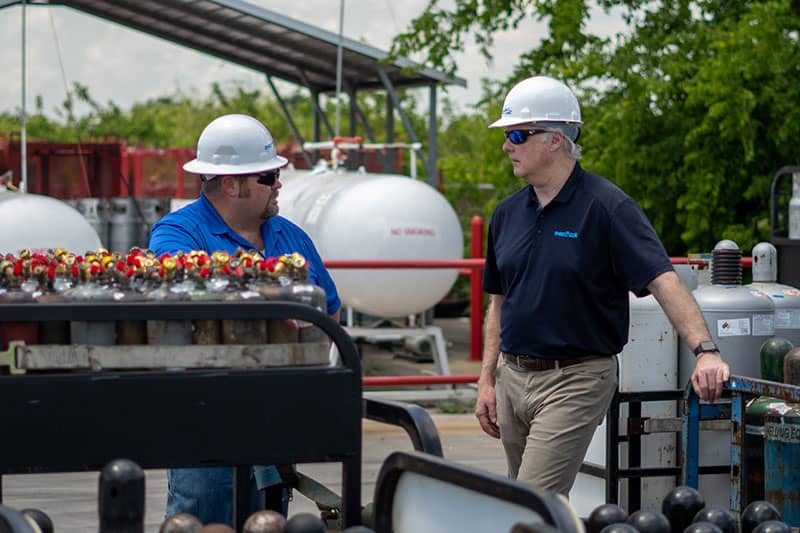How Welders Can Reduce Waste and Improve Output with the Right Gas Mixtures
Your shielding gas selection directly determines how much scrap you generate, how many parts you complete per shift, and whether your welds pass inspection the first time. Most fabricators treat gas as a commodity—something you order when you run low without much thought about composition or purity. That approach leaves efficiency gains sitting on the table because different gas mixtures produce dramatically different results even when welding the same materials with identical equipment.
Match Your Gas to Your Base Material
Using the wrong shielding gas for your base material creates problems that compound throughout production. Straight argon on thick carbon steel with MIG produces shallow, inconsistent penetration that requires multiple passes to achieve proper fusion. Switch to a 75/25 argon-CO2 blend and penetration improves immediately, letting you complete joints in fewer passes with better fusion characteristics. Pure argon works well on thin aluminum sections, but thicker aluminum pulls heat away so quickly that you struggle to maintain a stable puddle. Adding 25-30% helium increases heat input substantially without raising amperage to levels that cause warping, and your travel speed increases because the arc stays stable at higher wire feed rates.
Stainless steel benefits from tri-mix blends that most shops never consider. A small addition of oxygen or CO2 to an argon-helium base improves wetting and arc stability, which translates directly to faster travel speeds and better bead appearance without fighting the puddle to get proper tie-in at the toes.
Adjust Gas Composition for Process Requirements
TIG welding demands different gas characteristics than MIG or flux-cored processes. TIG relies on arc stability and precise heat control, which is why pure argon or argon-helium blends work best. Introducing reactive gases like CO2 disrupts the arc and creates oxidation on materials like titanium or aluminum that require pristine shielding. MIG welding tolerates and often benefits from reactive gas additions, where small percentages of CO2 or oxygen improve arc characteristics and metal transfer while reducing the tendency for cold lap or incomplete fusion at the toes.
Transfer mode also influences optimal gas selection. Spray transfer requires higher argon content to maintain smooth metal transfer, while short circuit benefits from slightly higher CO2 levels that help control the puddle and reduce heat input on thin materials. The specific percentage depends on your material thickness and desired penetration profile.
Minimize Defects Through Proper Gas Purity
Contaminated shielding gas introduces defects that turn completed welds into scrap. Moisture causes porosity and hydrogen cracking, oxygen creates surface oxidation that weakens joints, and nitrogen makes welds brittle and prone to cracking under stress. These problems often don’t appear during visual inspection but show up during testing or when a component fails in service.
We verify gas purity through testing at multiple points in the supply chain and prepare each cylinder with evacuation and purging cycles that remove residual contaminants. The seals and valve systems prevent atmospheric contamination during storage and transport, ensuring the gas arriving at your facility maintains the purity levels your welding process requires.
Get Application-Specific Recommendations
Our experience and expert KnowHow™ come from working with fabricators across different industries and applications. We’ve seen what works in high-volume production environments versus custom job shops, and we understand how gas selection needs to change based on your specific circumstances.
Better gas selection reduces the scrap rate, increases the number of parts your crew completes per shift, and cuts down on rework from failed inspections. If you’re ready to see how optimized gas mixtures can help you Forge Forward with measurable improvements in waste reduction and productivity, contact our team to discuss your welding applications and current gas usage.
Looking out for your future
Get your career going on the right track with nexAir
Find out how nexAir KnowHow has impacted businesses all over the Southeast
Our expertise makes us more than a valuable partner, it makes us headlines
Don't see what you're looking for?
Everything we offer is a click away and it will arrive before you know it.


